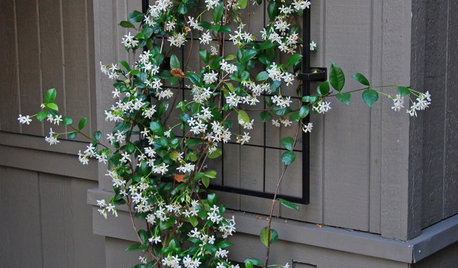Dying Lilac
mgeca
13 years ago
Related Stories

GARDENING AND LANDSCAPINGSee a Soothing Backyard Bathhouse Born From a Salvaged Tub
Creative thinking and DIY skills give a Portland couple a pergola-covered 'hot tub' under the stars
Full Story
GARDENING GUIDESGreat Design Plant: Ceanothus Pleases With Nectar and Fragrant Blooms
West Coast natives: The blue flowers of drought-tolerant ceanothus draw the eye and help support local wildlife too
Full Story
LIFETrue Confessions of a House Stalker
Letting go when a new owner dares to change a beloved house's look can be downright difficult. Has this ever happened to you?
Full Story
PRODUCT PICKSGuest Picks: Glam Central Home Office
A little bling, a few ruffles and suddenly that workspace is fit for a luxury-loving femme
Full Story
PURPLEYour Colors: 3 Ways to Work With Purple
Scared of purple? Think of it as plum, amethyst or eggplant, and use with the right companion colors
Full Story
SPRING GARDENINGTop 10 Scented Plants for Your Garden
A palette of perfumed plants can transform even the smallest of gardens into a sensory delight
Full Story
GARDENING GUIDESHouzz Call: What’s Your Favorite Backyard Beauty?
The simple, honest daisy is this writer’s go-to garden flower. We want to hear which plant, flowering or otherwise, gives you special joy
Full Story
FEEL-GOOD HOMESimple Pleasures: Scent and Memory
Fragrant jasmine, fresh-brewed coffee, baking bread. Scents can evoke memories and bring sensory pleasure to our homes
Full Story
GARDENING GUIDES5 Best-Behaved Trees to Grace a Patio
Big enough for shade but small enough for easy care, these amiable trees mind their manners in a modest outdoor space
Full Story
PETSPet-Proofing Your Home: A Room-by-Room Guide
Not all pet dangers are obvious. Keep furry friends safe and sound by handling all of these potential hazards
Full StoryMore Discussions








Embothrium
ken_adrian Adrian MI cold Z5
Related Professionals
Deer Park Landscape Architects & Landscape Designers · Norwood Landscape Contractors · Bowie Landscape Contractors · Flagstaff Landscape Contractors · Fort Wayne Landscape Contractors · Lewisville Landscape Contractors · Live Oak Landscape Contractors · Palatine Landscape Contractors · Weymouth Landscape Contractors · Artesia Window Contractors · Conyers Window Contractors · Glendale Heights Window Contractors · Mineola Window Contractors · Fort Worth Decks, Patios & Outdoor Enclosures · Fort Pierce Decks, Patios & Outdoor EnclosuresmgecaOriginal Author
hortster
mgecaOriginal Author
hortster
mgecaOriginal Author
Embothrium
mgecaOriginal Author
ken_adrian Adrian MI cold Z5
mgecaOriginal Author
athenainwi
mgecaOriginal Author